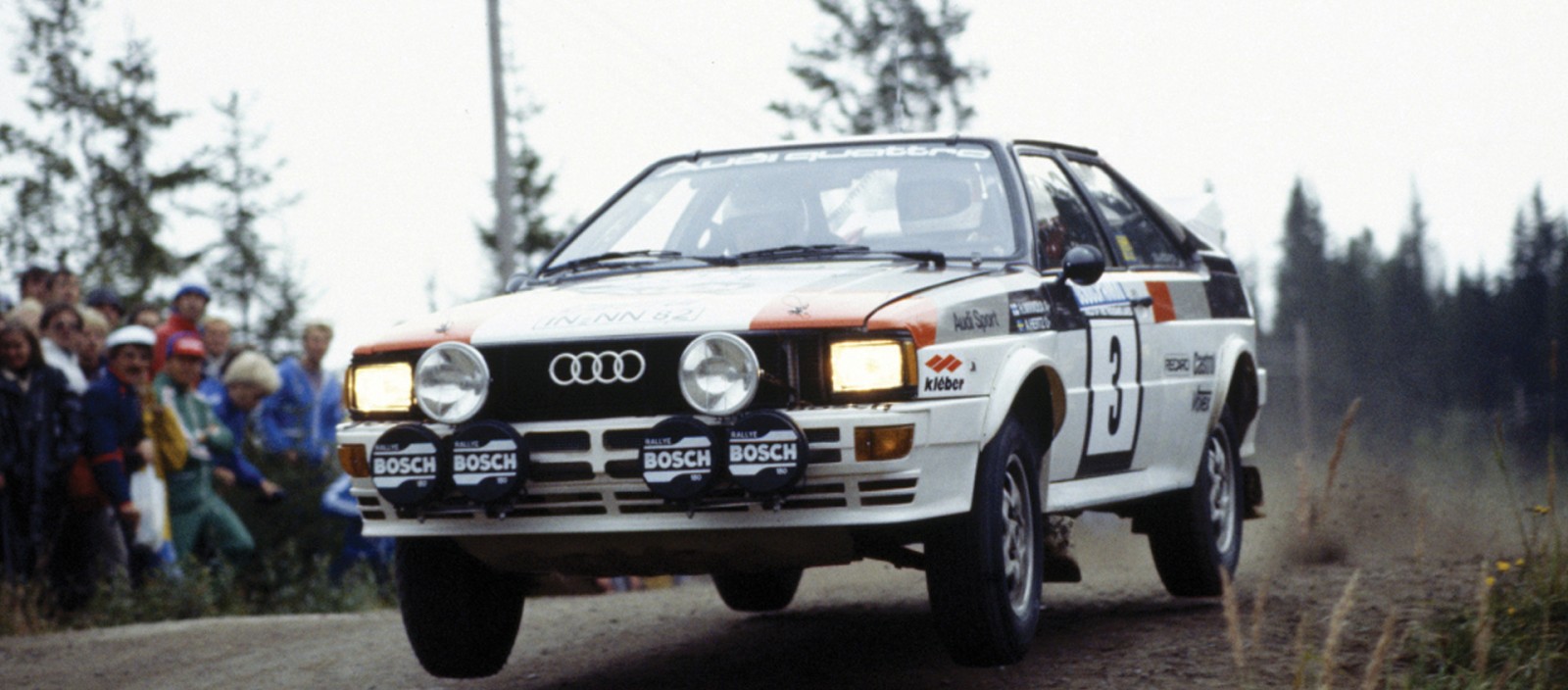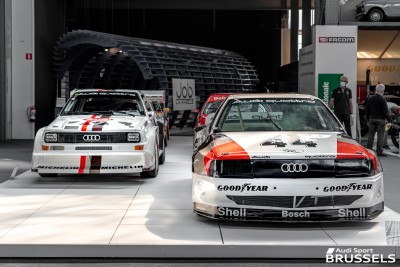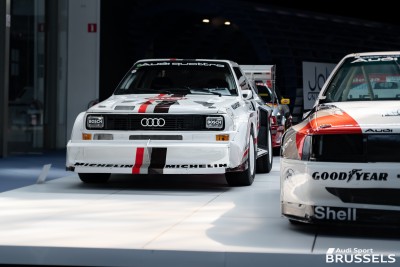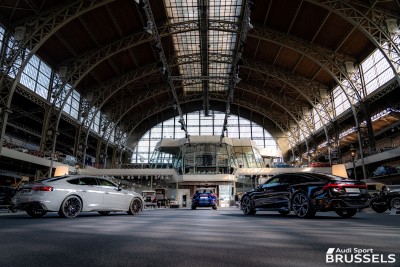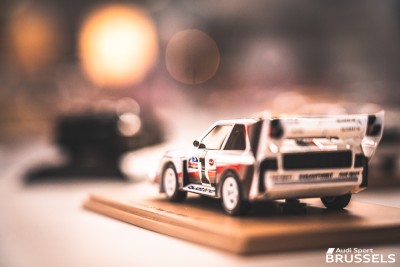he Audi Quattro is 40 years old.
An excellent opportunity for Autoworld-Brussels to highlight some fifteen models of this sporty car that caused a sensation at the 1980 Geneva Motor Show.
It was in fact there that Audi for the first time revealed the Coupé Quattro, an unprecedented coupé, powerful and sporty (200 BHP/147 kW), with four-wheel drive, a propulsion concept hitherto reserved for trucks and 4x4.
From 11th September through to 7th October, the Audi Quattro models exhibited at Autoworld will recount the fabulous story of this sporty car that revolutionised the rally world … and automotive safety.
Not only will we see one of its first coupé models, but also a fair number of rally and competition versions as also some emblematic sports models.
We can already confirm the presence of models such as a GR4 Rally from 1980, the 1983 Rally Gr B, the 1982 Ur Quattro, the 200 Quattro TransAM dating from 1988, the 1993 RS2 and the Quattro Sport from 1985, and many others.
The Audi Quattro, pioneer of permanent four-wheel drive
In the winter of 1976/77, the Audi engineers had taken inspiration from tests carried out on the VW Iltis, an off-road designed by Audi for the German army, and which had shown to have excellent roadholding on snow and ice. They fitted a comparable four-wheel drive in an Audi 80. The Audi Quattro’s debut in rallies followed one year later and wreaked havoc in the sector. Under the impetus of Ferdinand Piëch, at that time Audi’s technical director, Audi Quattro enters the competition world, promptly in the World Rally Championship of 1981.
In five years, Audi clinches two titles, namely “Drivers” World Championship and 2 “Constructors” titles.
Worth noting that our Belgian driver Marc Duez won his first victory in an Audi Quattro in 1983 at the Boucles de Spa, with Willy Lux as co-driver.
And if, since then, the majority of rally cars are fitted with the quattro system, it is all down to Audi! Moreover, knowing that in the ‘80s, in order to homologate a car in rallies, the manufacturers were obliged to produce a “road” version of at least 200 models, there are still some gorgeous road-going Quattro models from those years also.
“Quattro” for four-wheel drive
While today it might seem normal to have four-wheel drive in your car, it was far from being the case in 1980. With the quattro technology, Audi ushers in a revolutionary era when it comes to vehicle safety.
Up until then 100% of the engine’s power was transmitted either to the rear or the front wheels. With all wheel drive the power is spread over the four wheels thanks to a central differential, allowing for better roadholding.
Among the advantages of this technology, the fact that traction is optimised when accelerating. On the handling front the quattro system makes driving quite purely exceptional. “It is as though the car is glued to the road”.
Quattro, Audi’s ADN
The permanent four-wheel drive system was introduced for the first time by Audi in 1980. Today, one Audi out of four is a quattro. In the original quattro system, the engine and transmission were fitted longitudinally. The quattro system has undergone numerous evolutions since 1980. There was the Audi 100, the AVUS (which remained in prototype form), the Audi RS2 designed in collaboration with Porsche, the first to leave Audi’s sports subsidiary and christened … Quattro, the Audi RS2 and, in 1994 a completely insane sporty break for the time.
Quattro continued to evolve and very quickly the power could be transmitted to where the car needed it (to the left or right front wheel, or to the rear wheels), which allowed Audi to introduce, in 2005, off-road vehicles such as the Q7 (Q = Quattro).
The present generation (the sixth) was introduced in the Audi RS5. It is fitted with a central differential capable of applying 70% of the torque to the front wheels and up to 85% to the rear wheels, as and when needed, depending on the traction circumstances (bends, acceleration, braking, snow, etc.). This 6th quattro generation was then integrated in the A7 and latest A6 and A8 models.
Today, Audi’s most powerful models such as the RS4, RS6, RS5 and RS8 are available in quattro, and even in the smallest such as the Q2.
However, today’s worthy Audi Quattro heirs are undoubtedly the Audi TT RS and the Audi RS3 with their 5 cylinders and 400 bhp.
